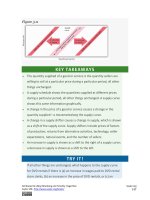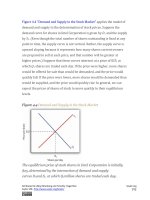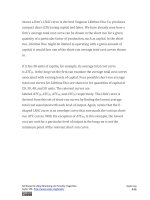Authors libby rittenberg 54
Bạn đang xem bản rút gọn của tài liệu. Xem và tải ngay bản đầy đủ của tài liệu tại đây (446.25 KB, 1 trang )
when it comes to providing more of the things that people want helps to
explain the dramatic shift from government-dominated toward marketdominated economic systems that has occurred throughout the world in
the past 25 years. The chapter concludes with an examination of the role of
government in an economy that relies chiefly on markets to allocate goods
and services.
2.1 Factors of Production
LEARNING OBJECTIVES
1. Define the three factors of production—labor, capital, and natural
resources.
2. Explain the role of technology and entrepreneurs in the utilization of
the economy’s factors of production.
Choices concerning what goods and services to produce are choices about
an economy’s use of itsfactors of production, the resources available to it
for the production of goods and services. The value, or satisfaction, that
people derive from the goods and services they consume and the activities
they pursue is called utility. Ultimately, then, an economy’s factors of
production create utility; they serve the interests of people.
The factors of production in an economy are its labor, capital, and natural
resources. Labor is the human effort that can be applied to the production
of goods and services. People who are employed or would like to be are
considered part of the labor available to the economy. Capital is a factor of
production that has been produced for use in the production of other
goods and services. Office buildings, machinery, and tools are examples of
Attributed to Libby Rittenberg and Timothy Tregarthen
Saylor URL: />
Saylor.org
54









